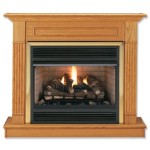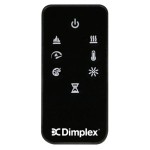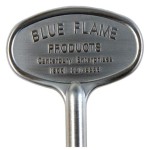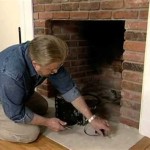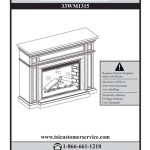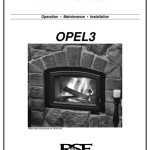Stackable Fireplace Stone: A Comprehensive Guide
Stackable fireplace stone, often referred to as manufactured stone veneer or faux stone, has emerged as a popular choice for both new construction and renovation projects. Its appeal lies in its aesthetic versatility, relative ease of installation, and cost-effectiveness compared to natural stone. This article provides a comprehensive overview of stackable fireplace stone, covering its composition, advantages, installation process, maintenance, and common applications.
The resurgence of fireplaces as focal points in residential and commercial spaces has spurred the development of innovative materials to enhance their aesthetic appeal and functionality. While traditional brick and natural stone remain viable options, stackable fireplace stone offers a compelling alternative, balancing visual charm with practical considerations. Understanding the nuances of this material is crucial for making informed decisions regarding its use in any fireplace project.
Composition and Manufacturing
Stackable fireplace stone is primarily composed of a lightweight concrete mixture molded to resemble natural stone. The precise composition varies depending on the manufacturer, but typically includes Portland cement, aggregates (such as sand, gravel, or crushed stone), and mineral oxides for coloring. These components are combined in specific ratios to achieve the desired texture, color, and structural integrity.
The manufacturing process typically involves creating molds from actual natural stones. These molds capture the intricate details and textures of the original stones, which are then replicated in the manufactured stone veneer. The concrete mixture is poured into the molds, vibrated to remove air pockets and ensure uniform density, and allowed to cure for a specified period. After curing, the individual stone pieces are demolded and undergo a finishing process to enhance their color and texture. This may involve applying sealants or stains to further mimic the appearance of natural stone.
The use of mineral oxides for coloring ensures that the color is integrated throughout the stone, rather than simply applied to the surface. This helps to maintain the color integrity of the stone over time, even with exposure to weathering and UV radiation. The lightweight nature of the concrete mixture, compared to natural stone, significantly reduces the load on the fireplace structure and simplifies the installation process.
Advantages of Using Stackable Fireplace Stone
Stackable fireplace stone offers numerous advantages over traditional alternatives, making it a preferred choice for many homeowners and contractors. Key benefits include cost-effectiveness, ease of installation, design versatility, and enhanced durability. Understanding these advantages is critical in evaluating whether stackable stone is the right material for a specific fireplace project.
Cost-Effectiveness: One of the primary advantages of stackable fireplace stone is its lower cost in comparison to natural stone. Natural stone extraction, transportation, and cutting are significantly more expensive processes. The manufactured nature of stackable stone allows for mass production, resulting in lower material costs. Additionally, the lighter weight of stackable stone translates to reduced shipping costs and easier handling, further contributing to overall cost savings.
Ease of Installation: Stackable fireplace stone is significantly easier to install than natural stone, primarily due to its lightweight nature and consistent shape. The individual stones are designed to interlock, simplifying the stacking process and minimizing the need for extensive cutting and shaping. This reduces labor costs and installation time. Many homeowners with basic DIY skills can successfully install stackable fireplace stone themselves, further contributing to cost savings. Specific adhering materials are available that promote ease of installation and long term adhesion to the structural substrate of the fireplace.
Design Versatility: Stackable fireplace stone offers a wide range of design possibilities. It is available in various colors, textures, and sizes, mimicking different types of natural stone, such as river rock, limestone, and fieldstone. This allows homeowners to achieve the desired aesthetic without being limited by the availability or cost of specific natural stone types. The consistency in size and shape also allows for precise and controlled installations, resulting in a polished and professional look. Manufacturers continue to develop new styles and patterns, expanding the design options available to consumers. The versatility extends beyond color and texture; stackable stones come in varied shapes, from linear ledgestone to irregular fieldstone, ensuring compatibility with different architectural styles.
Enhanced Durability: While stackable fireplace stone is lighter than natural stone, it is engineered to be highly durable and weather-resistant. The concrete mixture is formulated to withstand temperature fluctuations, moisture exposure, and UV radiation. Many manufacturers offer warranties on their stackable stone products, providing assurance of their long-term performance. The color-integrated process ensures that the color of the stone will not fade or chip easily, maintaining its aesthetic appeal for years to come. Regular sealing may be required to enhance the water resistance and prevent staining, depending on the specific product and environmental conditions.
Installation Process for Stackable Fireplace Stone
The installation of stackable fireplace stone follows a structured process to ensure proper adhesion, alignment, and a visually appealing outcome. Proper surface preparation, mortar selection, and adherence to manufacturer guidelines are crucial for a successful installation. Failure to follow these steps can result in loose stones, inconsistent spacing, and a compromised aesthetic.
Surface Preparation: The first step in the installation process is to prepare the surface to which the stone will be applied. This typically involves cleaning the surface to remove any dirt, dust, or debris. A wire brush or pressure washer can be used to ensure a clean and sound substrate. If the surface is painted or has a glossy finish, it may need to be roughened up to promote adhesion. Applying a scratch coat of mortar to the wall can create a better bonding surface for the stone. It is essential to ensure that the surface is structurally sound and capable of supporting the weight of the stone.
Mortar Application: The selection of the appropriate mortar is crucial for ensuring a strong and durable bond between the stone and the surface. Modified thin-set mortar is commonly used for stackable fireplace stone installations. The mortar should be mixed according to the manufacturer's instructions to achieve the correct consistency. A notched trowel is used to apply the mortar to the back of each stone, ensuring even coverage. The amount of mortar applied should be sufficient to create a strong bond but not so excessive that it oozes out between the stones.
Stone Placement: The stone is then carefully placed onto the prepared surface, applying firm pressure to ensure proper adhesion. It is important to maintain consistent spacing between the stones, using spacers if necessary. The stones are typically stacked in a staggered pattern to create a natural and visually appealing look. It is essential to ensure that the stones are level and plumb during the installation process. Adjustments can be made by tapping the stones gently with a rubber mallet. Any excess mortar that oozes out between the stones should be removed immediately with a damp sponge.
Grouting (Optional): Depending on the desired look, grout may be applied between the stones. Grouting can enhance the visual appeal and create a more finished look. The grout should be applied using a grout float, ensuring that it fills the gaps between the stones completely. Excess grout should be removed immediately with a damp sponge. The grout should be allowed to cure according to the manufacturer's instructions before applying any sealant.
Sealing (Optional): Sealing the stackable fireplace stone can provide added protection against moisture damage and staining. A penetrating sealer is typically used, which is applied to the surface of the stone using a brush or sprayer. The sealer should be allowed to dry completely before the fireplace is used. The frequency of sealing will depend on the specific product and environmental conditions.
Maintenance and Care
Proper maintenance and care are essential for preserving the aesthetic appeal and prolonging the lifespan of stackable fireplace stone. Regular cleaning, prompt stain removal, and periodic sealing are crucial for maintaining the stone's integrity. Neglecting maintenance can lead to discoloration, staining, and eventual deterioration of the stone.
Regular Cleaning: Stackable fireplace stone should be cleaned regularly to remove dust, dirt, and other debris. A soft brush or damp cloth can be used to clean the surface. For more stubborn dirt or grime, a mild detergent can be used, followed by a thorough rinsing with clean water. Avoid using harsh chemicals or abrasive cleaners, as they can damage the stone's surface. Regular cleaning helps to prevent the buildup of dirt and grime, which can make the stone look dull and unattractive.
Stain Removal: Stains should be removed promptly to prevent them from becoming permanent. The type of stain will dictate the appropriate cleaning method. For oil-based stains, a degreasing cleaner can be used. For water-based stains, a mild detergent and water solution may be sufficient. For more stubborn stains, a specialized stone cleaner may be required. Always test the cleaning solution in an inconspicuous area first to ensure that it does not damage the stone.
Sealing: Periodic sealing can help to protect the stackable fireplace stone from moisture damage and staining. The frequency of sealing will depend on the specific product and environmental conditions. A penetrating sealer is typically used, which is applied to the surface of the stone using a brush or sprayer. The sealer should be allowed to dry completely before the fireplace is used. Sealing helps to prevent water from penetrating the stone, which can lead to cracking and deterioration over time.
Inspection and Repair: Regularly inspect the stackable fireplace stone for any signs of damage, such as cracks or loose stones. Any damaged stones should be repaired or replaced promptly to prevent further damage. Loose stones can be reattached using mortar. Cracks can be filled with a stone repair compound. Addressing any damage promptly will help to maintain the structural integrity and aesthetic appeal of the fireplace.
Common Applications Beyond Fireplaces
While stackable fireplace stone is primarily associated with fireplaces, its versatility extends to a wide range of other applications. Its aesthetic appeal, ease of installation, and durability make it a suitable choice for various indoor and outdoor projects. Exploring these alternative applications can unlock new design possibilities and enhance the overall aesthetic of a space.
Interior Accent Walls: Stackable stone is an excellent choice for creating stunning interior accent walls. The texture and color variations of the stone can add depth and character to any room. It can be used to create a focal point in a living room, bedroom, or dining room. The ease of installation makes it a relatively simple and cost-effective way to transform a space. Different styles of stackable stone can be used to achieve various aesthetic effects, from rustic to contemporary.
Exterior Veneer: Stackable stone can be used as an exterior veneer to enhance the curb appeal of a home. It can be applied to the entire facade or used to accent specific areas, such as the front entrance or foundation. The durability of stackable stone makes it resistant to weathering and fading, ensuring that it maintains its aesthetic appeal for years to come. The lightweight nature of the stone reduces the load on the building structure, making it a suitable choice for a wide range of construction projects.
Outdoor Kitchens and Fire Pits: Stackable stone is a popular choice for outdoor kitchens and fire pits. Its durable and weather-resistant properties make it ideal for withstanding the elements. It can be used to create a stylish and functional outdoor living space. The stone can be used to construct the kitchen island, barbecue surround, or fire pit enclosure. The versatility of stackable stone allows for customization to match the overall design of the outdoor space.
Garden Features: Stackable stone can be used to create various garden features, such as retaining walls, water features, and planters. Its natural look and texture blend seamlessly with the surrounding landscape. It can be used to add height and dimension to a garden. The stone can be arranged in different patterns to create unique and visually appealing features. The durability of stackable stone ensures that it will withstand the elements and maintain its aesthetic appeal for years to come.

12 Stacked Stone Fireplace Ideas For Optimal Coziness

12 Stacked Stone Fireplace Ideas For Optimal Coziness

5 Stacked Stone Surrounds Travertine Quartzite Or Marble

5 Stacked Stone Surrounds Travertine Quartzite Or Marble

23 Stacked Stone Fireplace Ideas Sebring Design Build Contemporary Remodel Fireplaces
:max_bytes(150000):strip_icc()/InteriorImpressions_2-261d8f7128f24652882c67a2252a5f0b.png?strip=all)
20 Stacked Stone Fireplace Ideas To Warm Up Your Space

Stacked Stone Fireplace 10 Luxurious Design Ideas Stoneyard

54 Inspiring Stacked Stone Fireplace Ideas For Your Home Ledger Fireplaces White

4 Natural Stacked Stone Fireplaces For Your Dream Design

Stacked Stone Fireplace 10 Luxurious Design Ideas Stoneyard
Related Posts

